The National Interest magazine published a compilation of Russia’s most dangerous submarines. The list includes five submarines which create a shield that cannot be broken by any Western analogue.
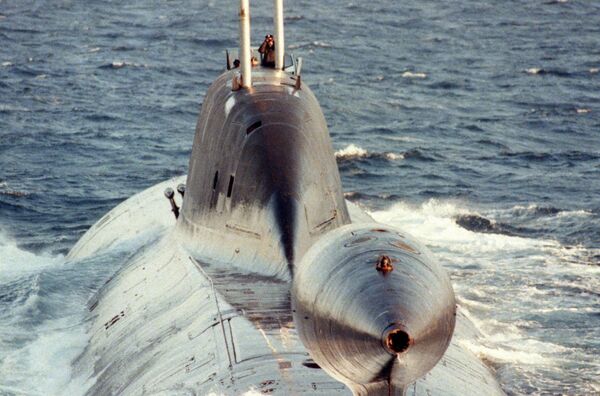
1/8
© Photo : Рublic domain
Project 971 Shchuka-B or Bars (NATO reporting name Akula) is a nuclear-powered attack submarine armed with 40 torpedoes, mines and 12 RK-55 Granat cruise missiles. First deployed in late 1980s, it can move at a speed of up to 35 knots when submerged, has a maximum operational depth of 600 meters (nearly 2,000 feet) and boasts an endurance of 100 days. The Akula remains one the quietest Russian submarines to date.
Above: An aerial stern-on view of a Russian Northern Fleet Akula class nuclear-powered attack submarine underway on the surface.
Above: An aerial stern-on view of a Russian Northern Fleet Akula class nuclear-powered attack submarine underway on the surface.
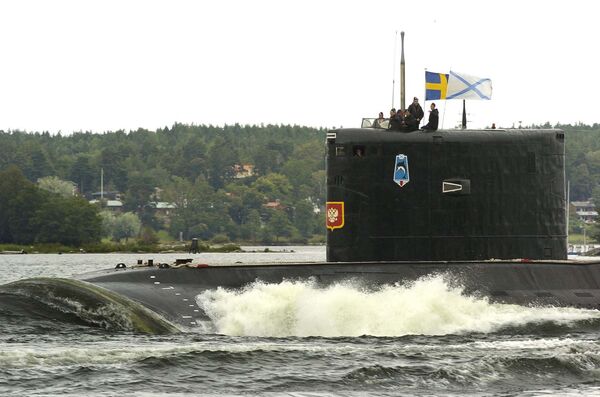
2/8
© AP Photo / Mark Earthy
Project 877 Paltus (NATO reporting name Kilo) is a diesel-electric powered attack submarine first commissioned in 1982.
Above: A Russian Kilo class submarine with the Russian naval flag glides into Stockholm's harbor and docked near the royal castle.
Above: A Russian Kilo class submarine with the Russian naval flag glides into Stockholm's harbor and docked near the royal castle.
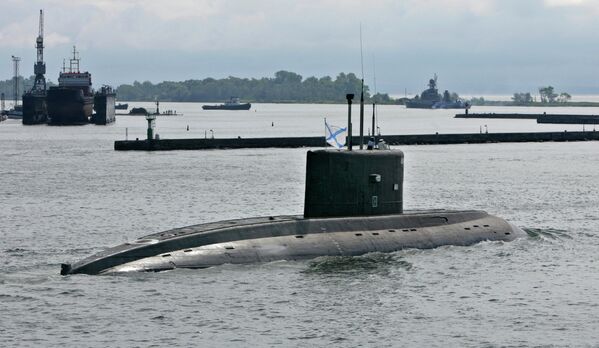
3/8
© AP Photo / File
The Kilo is equipped with surface-to-air missiles, torpedoes, mines and anti-ship missiles. The class was designed to carry out anti-shipping and anti-submarine missions in littoral waters.
Above: One of Russia's Paltus class submarines navigates at a harbor in Russia's Baltic enclave of Kaliningrad.
Above: One of Russia's Paltus class submarines navigates at a harbor in Russia's Baltic enclave of Kaliningrad.
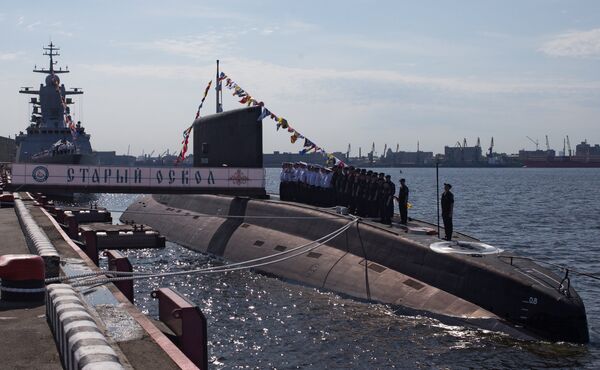
Project 636.3 Varshavyanka is an improved Kilo submarine. It has higher speed, more advanced stealth technology and extended combat range than its predecessor.
Above: The Stary Oskol submarine prior to the ceremony of hoisting the navy flag as part of the International Maritime Defense Show in St. Petersburg.
Above: The Stary Oskol submarine prior to the ceremony of hoisting the navy flag as part of the International Maritime Defense Show in St. Petersburg.
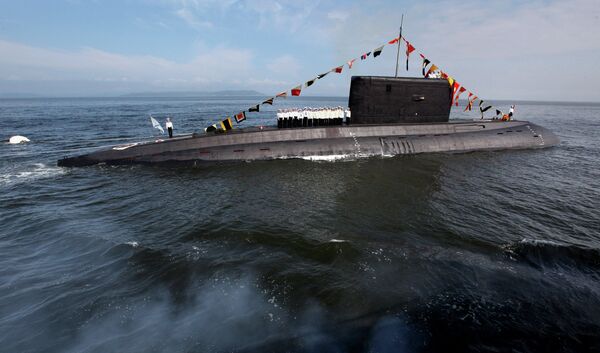
The improved Kilo is nearly impossible to detect underwater, so it was dubbed by NATO a "black hole." The submarine is armed with torpedoes, mines and Kalibr 3M54 cruise missiles.
Above: A Varshavyanka class diesel-electric submarine in commission during a general rehearsal of the parade for the Russian Navy Day in Vladivostok.
Above: A Varshavyanka class diesel-electric submarine in commission during a general rehearsal of the parade for the Russian Navy Day in Vladivostok.
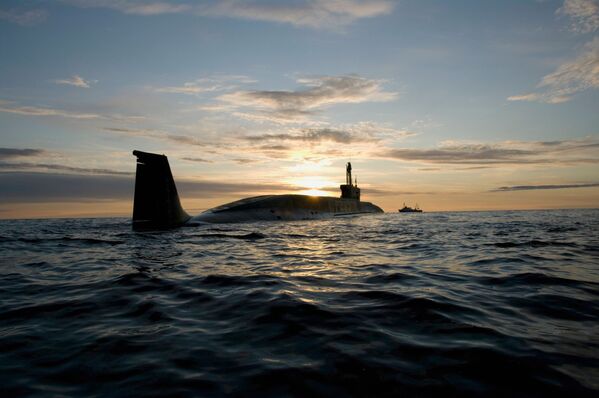
6/8
© Photo : Press-service of JSC PO Sevmash
The Borei-class (Project 955) submarine is one of the two platforms designed since the end of the Cold War. It is is a nuclear-powered ballistic missile submarine designed to replace Russia's aging Typhoon-class, Delta III and Delta IV subs and intended to serve as the backbone of Russia's maritime nuclear deterrence.
Above: The Yuri Dolgoruky nuclear-powered submarine during tests.
Above: The Yuri Dolgoruky nuclear-powered submarine during tests.
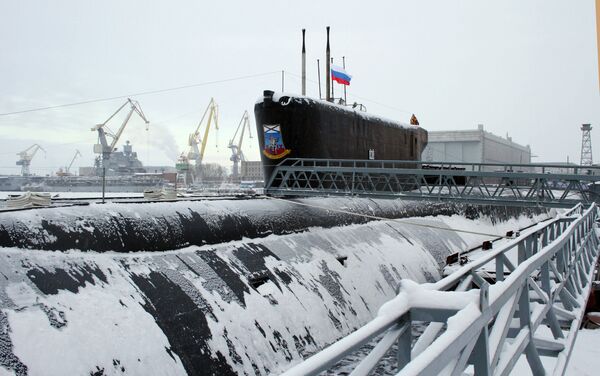
Yuri Dolgoruky (the flagmanship Project 955 submarine) and other Project 955 vessels are equipped with 16 RSM-56 Bulava submarine-launched ballistic missiles with a range of 8,000 kilometers (nearly 5,000 miles). Each Bulava SLBM is fitted with up to ten thermonuclear warheads.
Above: The Yury Dolgoruky nuclear-powered submarine seen during the ceremony of St.Andrew's flag-hoisting at the Sevmash shipyards, Severodvinsk.
Above: The Yury Dolgoruky nuclear-powered submarine seen during the ceremony of St.Andrew's flag-hoisting at the Sevmash shipyards, Severodvinsk.
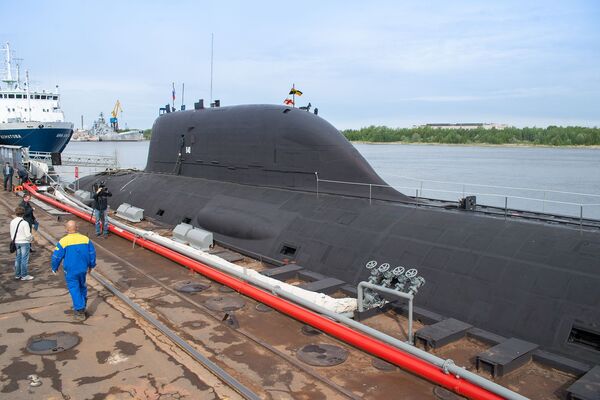
8/8
© Press-service of JSC "PO "Sevmas"
The Project 885 multipurpose attack submarines are touted as the most advanced multipurpose watercraft in the Russian Navy. In addition to its 533-mm torpedoes, a Yasen-class submarine is capable of firing cruise missiles from its eight vertical launching systems. It can also carry Onyx and Kalibr supersonic anti-ship missiles or land attack cruise missiles. The first Yasen-class sub, known as Severodvinsk, entered service in June 2014 and was assigned to Russia's Northern Fleet.
Above: The Severodvinsk multipurpose nuclear-powered submarine at the Sevmash shipyards, Severodvinsk.
Above: The Severodvinsk multipurpose nuclear-powered submarine at the Sevmash shipyards, Severodvinsk.

